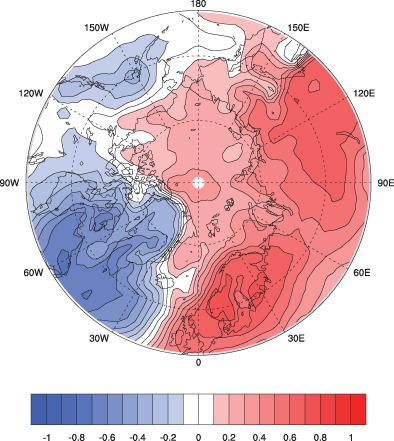当前位置:
X-MOL 学术
›
Int. J. Climatol.
›
论文详情
Our official English website, www.x-mol.net, welcomes your
feedback! (Note: you will need to create a separate account there.)
The 2020 Siberian heat wave
International Journal of Climatology ( IF 3.5 ) Pub Date : 2020-09-28 , DOI: 10.1002/joc.6850 James E. Overland 1 , Muyin Wang 1, 2
International Journal of Climatology ( IF 3.5 ) Pub Date : 2020-09-28 , DOI: 10.1002/joc.6850 James E. Overland 1 , Muyin Wang 1, 2
Affiliation

|
Siberia saw a heat wave of extreme monthly temperatures of +6°C anomalies from January through May 2020, culminating with near daily temperature records at the Arctic station of Verhojansk in mid‐June. This was a major Arctic event. The proximate cause for the warm extremes from January through April was the record strength of the stratospheric polar vortex (SPV) and tropospheric jet stream. The SPV and high geopotential heights to the south combined to provide strong zonal winds from the west that reduced the potential penetration of cold air from the north. An index of vortex strength is the Arctic Oscillation (AO); averaged over January–April, the AO set extreme positive records in 1989, 1990, and 2020 (baseline starting in 1950). The strength and stability of the SPV over the central Arctic contributed to the winter–spring persistence of the heat wave in Siberia. May–June temperatures were related to high tropospheric geopotential heights over Asia. An open question is whether these dynamic events are becoming more persistent. Such record events will not occur every year but one can expect that they will occasionally naturally reoccur over the next decades due to internal atmospheric variability in addition to a continued global warming background.
中文翻译:

2020年西伯利亚热浪
从2020年1月到2020年5月,西伯利亚出现了一个极端的极端温度+ 6°C的热浪,并在6月中旬在Verhojansk的北极站达到近乎每日的温度记录。这是北极的重大事件。一月至四月出现极端温暖的最直接原因是平流层极涡(SPV)和对流层射流的强度。SPV和南部的高地势高度相结合,提供了来自西部的强纬向风,从而减少了来自北部的潜在冷空气渗透。涡旋强度的指标是北极涛动(AO);平均而言,AO在1989年,1990年和2020年(1950年开始)创下了极端积极的记录。SPV在北极中部的强度和稳定性促进了西伯利亚热浪的冬春季持续存在。5-6月的温度与亚洲对流层高的地势高度有关。一个悬而未决的问题是这些动态事件是否变得更加持久。这种创纪录的事件不会每年发生,但人们可以预期,由于持续的全球变暖背景,由于内部大气的变化,在未来的几十年中,它们偶尔会自然发生。
更新日期:2020-09-28
中文翻译:

2020年西伯利亚热浪
从2020年1月到2020年5月,西伯利亚出现了一个极端的极端温度+ 6°C的热浪,并在6月中旬在Verhojansk的北极站达到近乎每日的温度记录。这是北极的重大事件。一月至四月出现极端温暖的最直接原因是平流层极涡(SPV)和对流层射流的强度。SPV和南部的高地势高度相结合,提供了来自西部的强纬向风,从而减少了来自北部的潜在冷空气渗透。涡旋强度的指标是北极涛动(AO);平均而言,AO在1989年,1990年和2020年(1950年开始)创下了极端积极的记录。SPV在北极中部的强度和稳定性促进了西伯利亚热浪的冬春季持续存在。5-6月的温度与亚洲对流层高的地势高度有关。一个悬而未决的问题是这些动态事件是否变得更加持久。这种创纪录的事件不会每年发生,但人们可以预期,由于持续的全球变暖背景,由于内部大气的变化,在未来的几十年中,它们偶尔会自然发生。











































 京公网安备 11010802027423号
京公网安备 11010802027423号